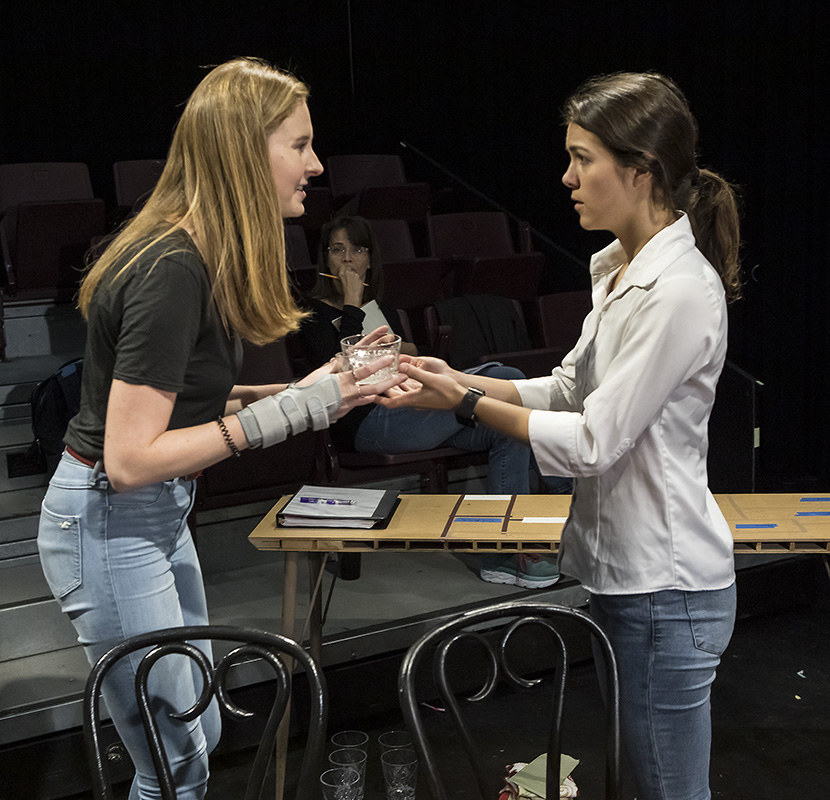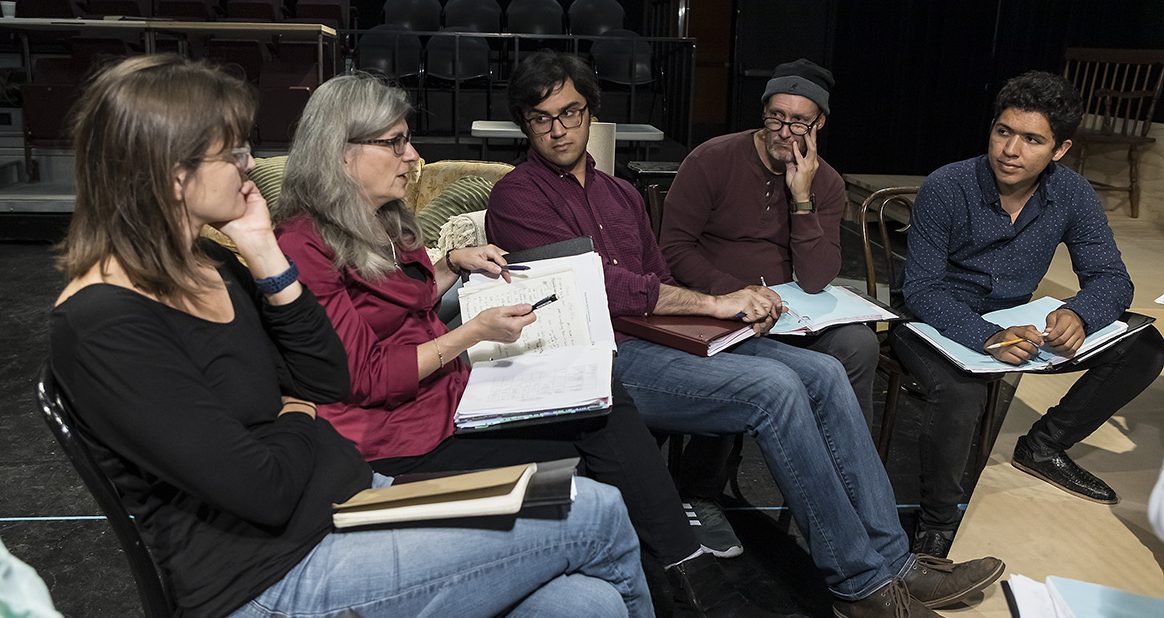Playwrights today struggle with certain unyielding constraints: They can abandon Aristotle’s unities at will, but they cannot go over budget. In many instances, the high cost of production means restricting the size of the cast. Through its Launch Pad program for new plays, the UCSB Theater Department lifts that burden in order to make the development of shows featuring larger casts possible. For example, take What Martha Did, which runs November 15-24 at the school’s Performing Arts Theater.
The playwright, Enid Graham, comes from New York City, where she has lived and worked as an actor in film, television, and theater since graduating from the Juilliard School. She’s written five plays, of which What Martha Did is the second, and she freely admits that until now, it’s been a challenge to bring it to the stage. “I was frustrated because I had this big script and I knew it needed work, but no theaters could develop it because of what it would cost,” Graham told me. Launch Pad, however, was looking for big plays like this. Graham said that it’s the talent pool in the UCSB BFA program that drove that connection. “They want to have a lot of characters because they’ve got a lot of good people who need to work,” she said. UCSB’s status as the only BFA-granting theater and dance department in the UC system means that top performers from all over come here to participate in the school’s conservatory-style program.
Graham’s approach to writing plays derives from her acting experience, and this gives her certain advantages, especially in this process-oriented setting. She sees herself as someone who creates scenes from a performer’s perspective and who has “an instinct for what’s playable.” Her dialogue is exuberant, provocative, and remarkably distinctive. While we may have seen families in turmoil gathering around a difficult matriarch before, What Martha Did makes this premise fresh with insight, structure, and some of the darkest dialogue this side of Edward Albee.

Without giving too much of the story away, What Martha Did concerns the legacy of a young woman who died early after writing a best-selling inspirational book. Her family must now decide how the considerable revenue from Martha’s great work will be divided in the event that her mother, Mrs. Fisher, who currently receives that income, passes away. Everyone involved has their own needs and opinions, and no one expects the answer that Mrs. Fisher proposes.
Their infighting triggers some intensely bitter and personal attacks, along with several key revelations about the circumstances surrounding Martha’s death. Asked about how mean the characters sometimes are to one another, Graham said, “It’s family, right? You can be meaner to family than you can be to anybody ever, because you can’t lose them.” After conceding that “obviously you can” lose family members, she went to explain that “they’re harder to lose than your friends; they tend to stick around no matter what.”
This aspect of the script brought out another unexpected advantage of working with the BFA cohort of performers. Graham said that “we’re in luck with this setup here, because there’s already a family feeling that exists between these people.”
The play was offered at UCSB over the summer in a staged reading format; this version will be given a full production, with sets, costumes, and a fully rehearsed cast. Only three performers are returning from the reading. Two of them are professionals: UCSB professor Julie Fishell as Mrs. Fisher, and Indy Award winner Brian Harrell as Mr. Green, an old friend of the family. The third is Alexandra Singleton, a BFA candidate who Graham feels has found a special affinity with her role. “We were lucky to find her,” Graham said of Singleton. “She incites my imagination.”
4•1•1 | What Martha Did runs November 15-24, at UCSB’s Performing Arts Theater for multiple performances. Call 893-2064 or see theaterdance.ucsb.edu.





You must be logged in to post a comment.